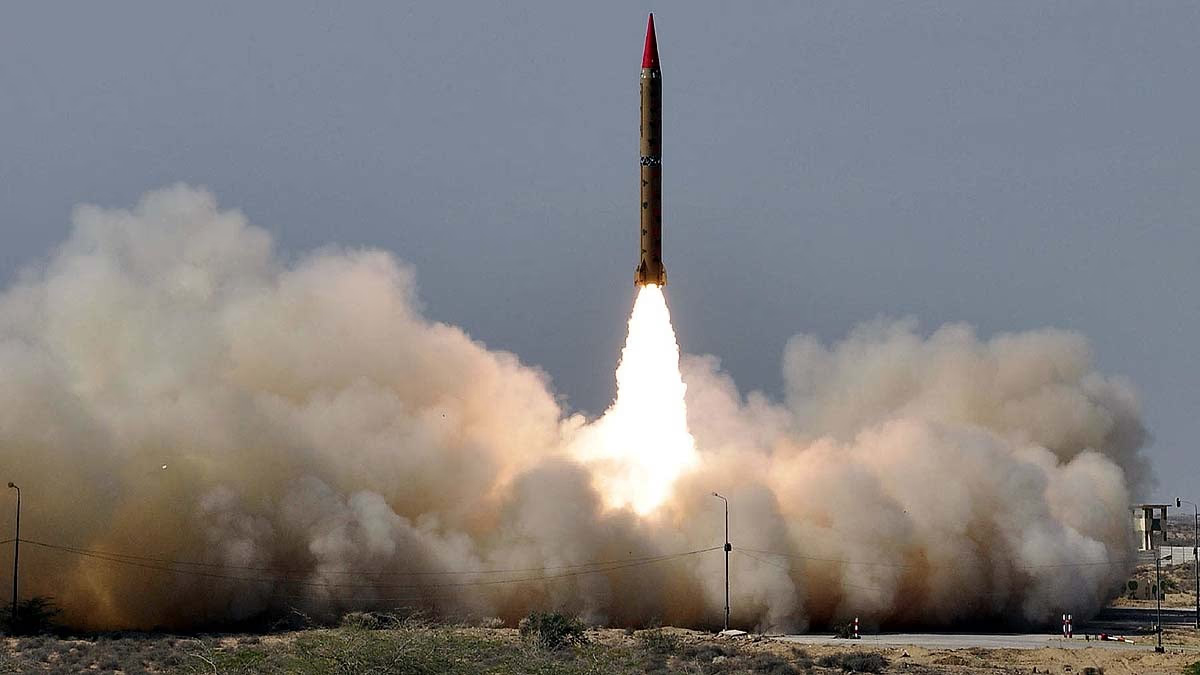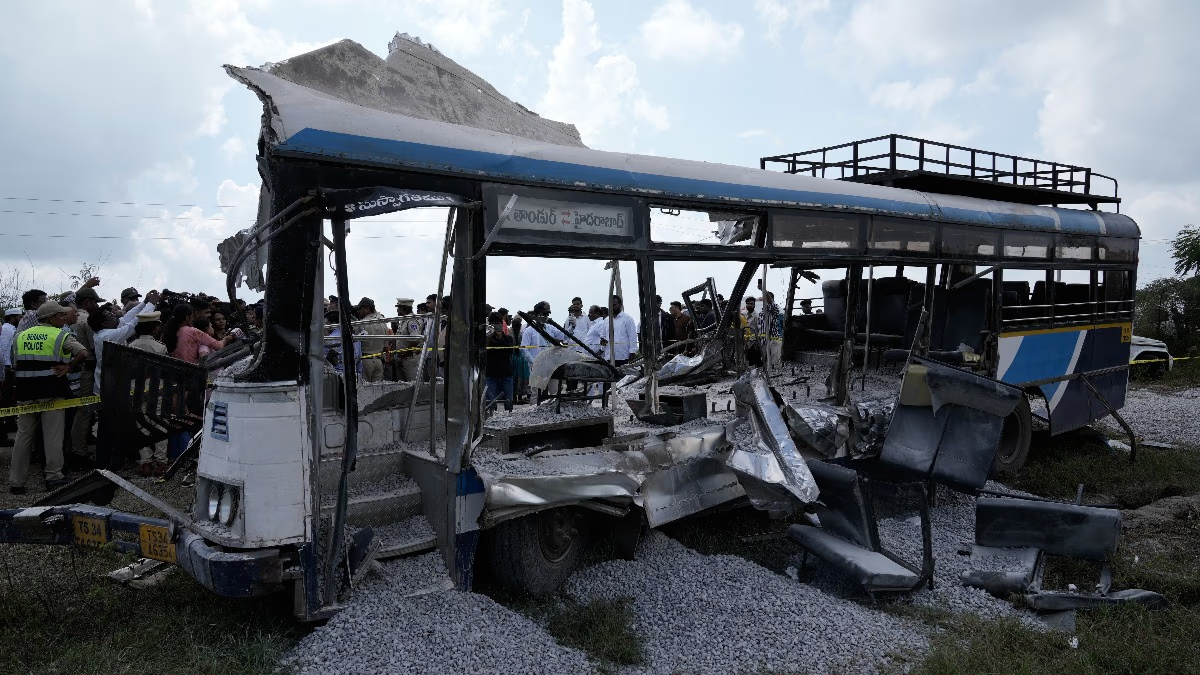Recently, former U.S. President Donald Trump made a significant claim in a TV interview, alleging that Pakistan is secretly conducting nuclear tests akin to Russia, China, and North Korea, which comes amidst ongoing tensions between India and Pakistan.
Operation Sindoor in May 2025 shook Pakistan to its core when India, responding to terrorist attacks, destroyed more than a dozen Pakistani airbases. This four-day operation brought Pakistan to its knees.
Pakistan possesses a variety of nuclear-capable missiles and weapons that threaten India. Given these weapons are launched from Pakistan’s territory, understanding their range helps in assessing which parts of India are vulnerable to their reach.
Also Read:
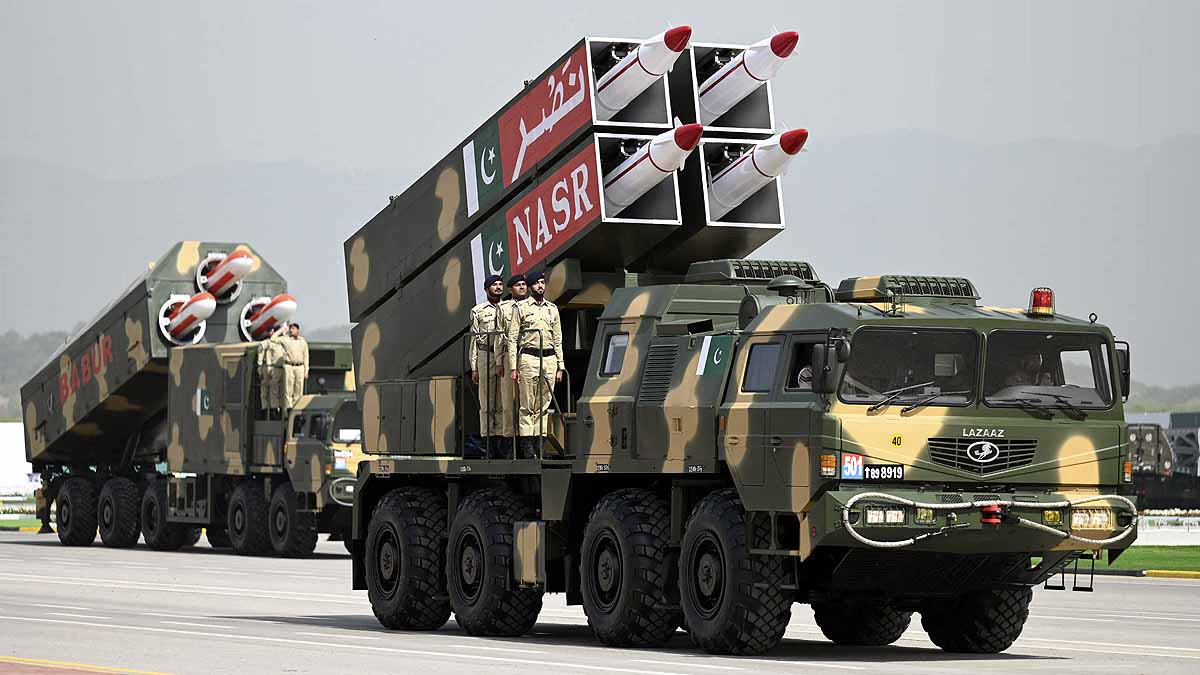
Source: aajtak
Considering the average distance from the India-Pakistan border – Delhi is about 500-600 km, Mumbai over 1,000 km, and Kolkata more than 1,500 km away from Pakistan. These figures are based on the 2025 U.S. and SIPRI reports.
Note: These are estimates; actual impacts rely on numerous factors like launch sites.
Nasr (Hatf-9): Range - 70 km
Reach in India: Only very near the border areas, such as Jammu & Kashmir or Punjab border regions. Designed for battlefields as a small nuclear weapon.
Ghaznavi (Hatf-3): Range - 290 km
Reach in India: Areas near Amritsar, Jalandhar, or Lahore across the border. Parts of Punjab.
Abdali (Hatf-2): Range - 450 km
Reach in India: Outskirts of Chandigarh, Delhi, or as far as the Rajasthan border.
Also Read:
Shaheen-I (Hatf-4): Range - 650-900 km
Reach in India: Easily to Delhi, Lucknow, Jaipur, or Kanpur. Covers a significant portion of North India.
Ghauri (Hatf-5): Range - 1,300 km
Reach in India: Beyond Delhi - up to areas like Bhopal, Lucknow, or near Kolkata, reaching central India.
Babar (Hatf-7): Range - 700 km (Cruise Missile)
Reach in India: To Delhi or Haryana. Flies at low altitudes, potentially evading radar detection.

Source: aajtak
Shaheen-II (Hatf-6): Range - 2,000 km
Reach in India: Effectively to Mumbai, Bangalore, Hyderabad, or Chennai, covering almost entire India.
Shaheen-III: Range - 2,750 km
Reach in India: Can cover Andaman Islands or the farthest corners in Southern India. It is under development.
Ababeel: Range - 2,200 km
Reach in India: Entire India, capable of carrying multiple warheads simultaneously.
Mirage III/V or JF-17 Thunder: Range - 1,000-2,000 km (Flight distance)
Reach in India: Crossing the border to drop bombs over Delhi, Mumbai, or Kolkata. These jets launch nuclear bombs or missiles.
India has established a robust multi-layered Ballistic Missile Defense (BMD) system and integrated air defense network, designed to intercept and neutralize nuclear-capable missiles from Pakistan.
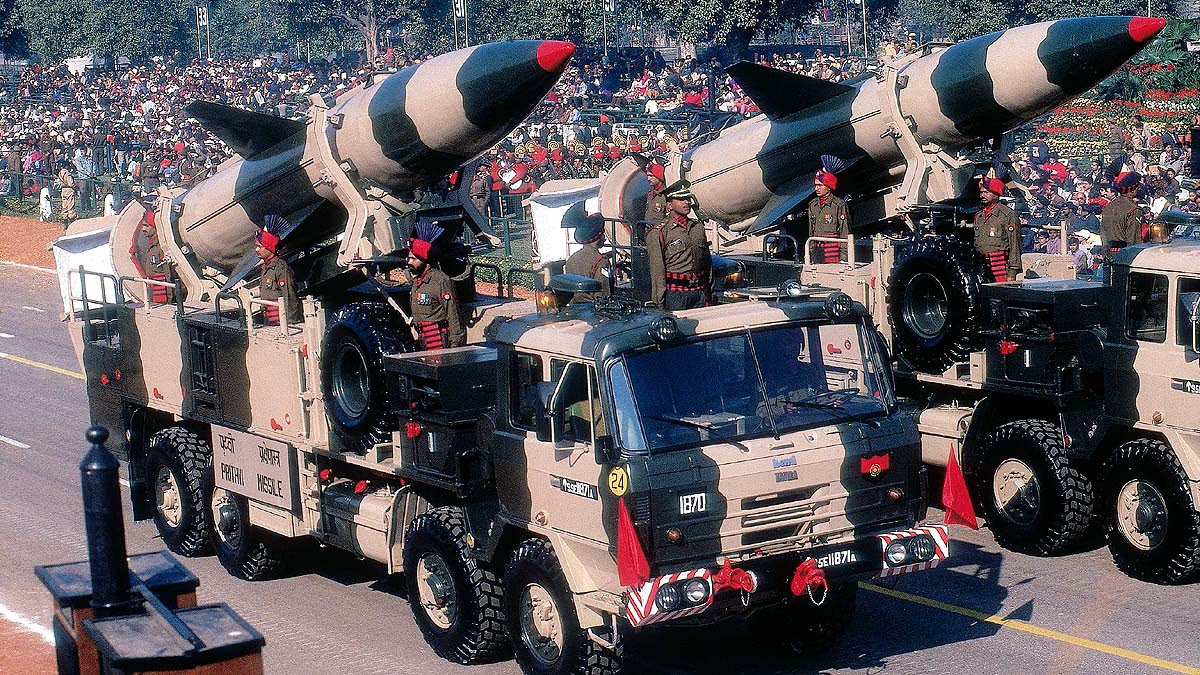
Source: aajtak
This system primarily targets short-range (SRBM like Nasr, 70 km), medium-range (MRBM like Ghauri, 1,300 km), and intermediate-range (IRBM like Shaheen-III, 2,750 km) ballistic missiles. With around 170 warheads under its belt, Pakistan heavily relies on these delivery systems, making interception crucial.
The BMD program commenced post-Pakistan's nuclear tests in 1999, primarily indigenous (led by DRDO), with support from systems like Russia's S-400. By November 2025, Phase I is operational for major cities (Delhi, Mumbai), while Phase II rapidly advances to counter emerging threats.
The first phase defends 2-3 major cities from short and medium-range missiles (SRBM and MRBM), boasting a 99.8% success rate and effectively countering missiles like Pakistan’s Shaheen-I, Shaheen-II, and Ghauri.

Source: aajtak
PAD (Prithvi Air Defense) operates exo-atmospheric at 6174 km/hr and engages targets at 80 km altitude.
AAD (Advanced Air Defense) is endo-atmospheric and works at 5556 km/hr speed at an altitude of 40 km.
PDV (Prithvi Defense Vehicle) is an upgraded version of PAD, reaching up to 100 km altitude. It was completed in 2019, deployed in Delhi-NCR region, with successful sea trials in 2023.
The second phase aims at long-range missiles (IRBM and ICBM), providing coverage against hypersonic threats and multi-missile saturations.
Also Read:
Main Interceptors Include...
AD-1: Low exo and endo-atmospheric hypersonic interceptor for missiles from 1,500 to 3,000 km.
AD-2: For over 5000 km range missiles, currently in trials. This phase has accelerated due to Pakistan's medium-range upgrades, with successful AD-1 retest in July 2024. AD-2 trials continue, complete deployment expected by 2027.
They provide multi-layer defense against cruise missiles, aircraft, and short-range ballistic threats...
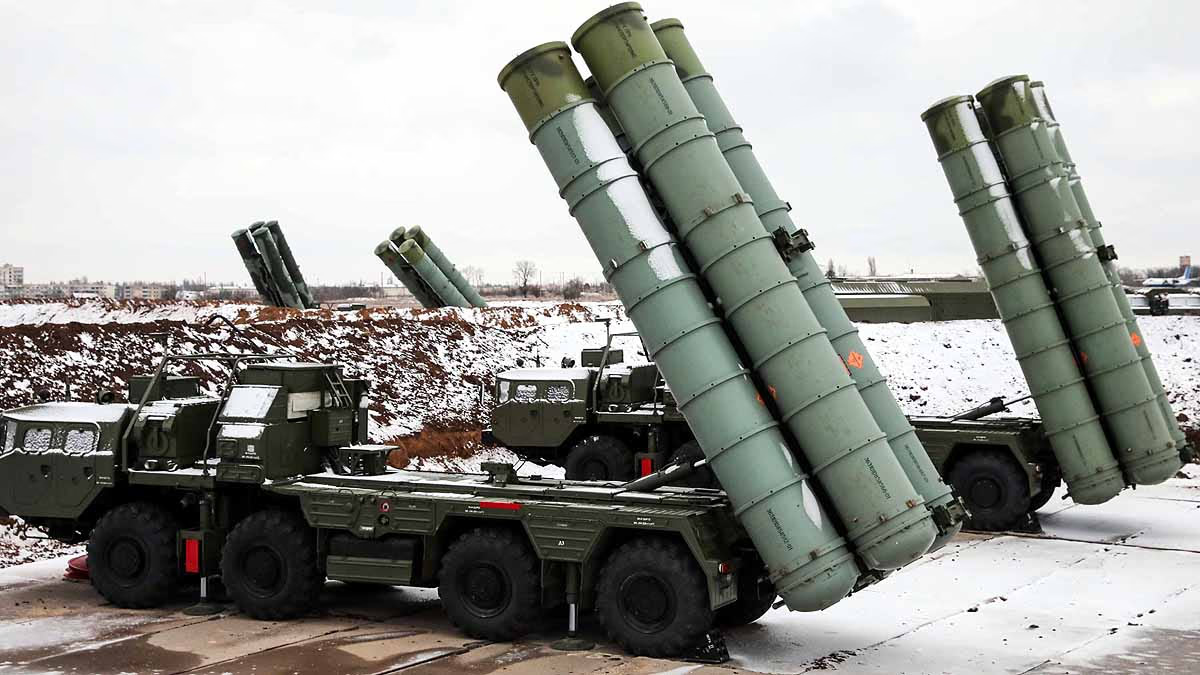
Source: aajtak
S-400 Triumph (Sudharshan Chakra): Advanced Russian system; intercepts ballistic missiles up to 400 km and up to 30 km altitude. Tracks 36 targets simultaneously. Three regiments operational for Pakistan border defense; two more by 2026. Precise capabilities against cruise/ballistic threats.
Barak-8 (MR-SAM/LR-SAM): India-Israel collaboration; 70-100 km range; counters cruise/ballistic missiles and UAVs. Deployed across army/navy/air force; last tested in April 2025.
Akash SAM Series: Indigenous; short-range (30-45 km with up to 20 km altitude); intercepts multiple targets. Akash Prime (45 km) and Akash-NG (70 km) tested in 2024; over 100 units deployed along borders.
Spyder: Israeli short-range (15-35 km); quick response against low-flying threats like cruise missiles.
Detection is key—these systems offer a 10-15 minute reaction time...
Swordfish Long Range Tracking Radar (LRTR): 600-1500 km detection; tracks 200 targets (as small as cricket ball-sized warheads). Integrated with BMD.
Super Swordfish: Upgraded version; two units operational since 2017.
AWACS (Airborne Warning and Control System): Falcon (Israeli, 400 km coverage) and Netra (indigenous, 200 km); real-time border tracking with 3 Falcons + 3 Netra on Pakistan border.
Akashteer System: Army's integrated air defense network; over 100 units by Sep 2024. Links radar/AWACS for automatic response. Joined IAF's IACCS in 2025. Effectively used during Operation Sindoor.
Against Pakistan: BMD Phase I neutralizes most of Pakistan's arsenal (e.g., Shaheen/Ghauri missiles by 80-90%). In Stark contrast with Operation Sindoor (May 2025), S-400/Akash handled threats in exercises post-operation. Phase II counters saturation attacks (multiple missiles).
Challenges: Hypersonic missiles, decoys, and electronic warfare. India invests over ₹50,000 crores+ in upgrades.
Overall: These multi-layer shields, with trials showing 80-90% interception success, deter nuclear blackmail.
Pakistan has a different policy. It emphasizes 'Full Spectrum Deterrence' with strategic, operational, and tactical weapons. Pakistan doesn't adhere to 'No First Use'. Its policy remains ambiguous to instill fear in adversaries.
There's a special focus on short-range tactical nuclear weapons for battlefield use. According to U.S. intelligence, Pakistan is expanding its nuclear arsenal, possessing around 170 nuclear weapons by 2025.
This number is expected to reach 200 in the coming years, with approximately 5,300 kg of Highly Enriched Uranium (HEU) and 580 kg of plutonium for hundreds of weapons. However, actual weapons numbers are lower as some fuel is reserved for delivery systems.
